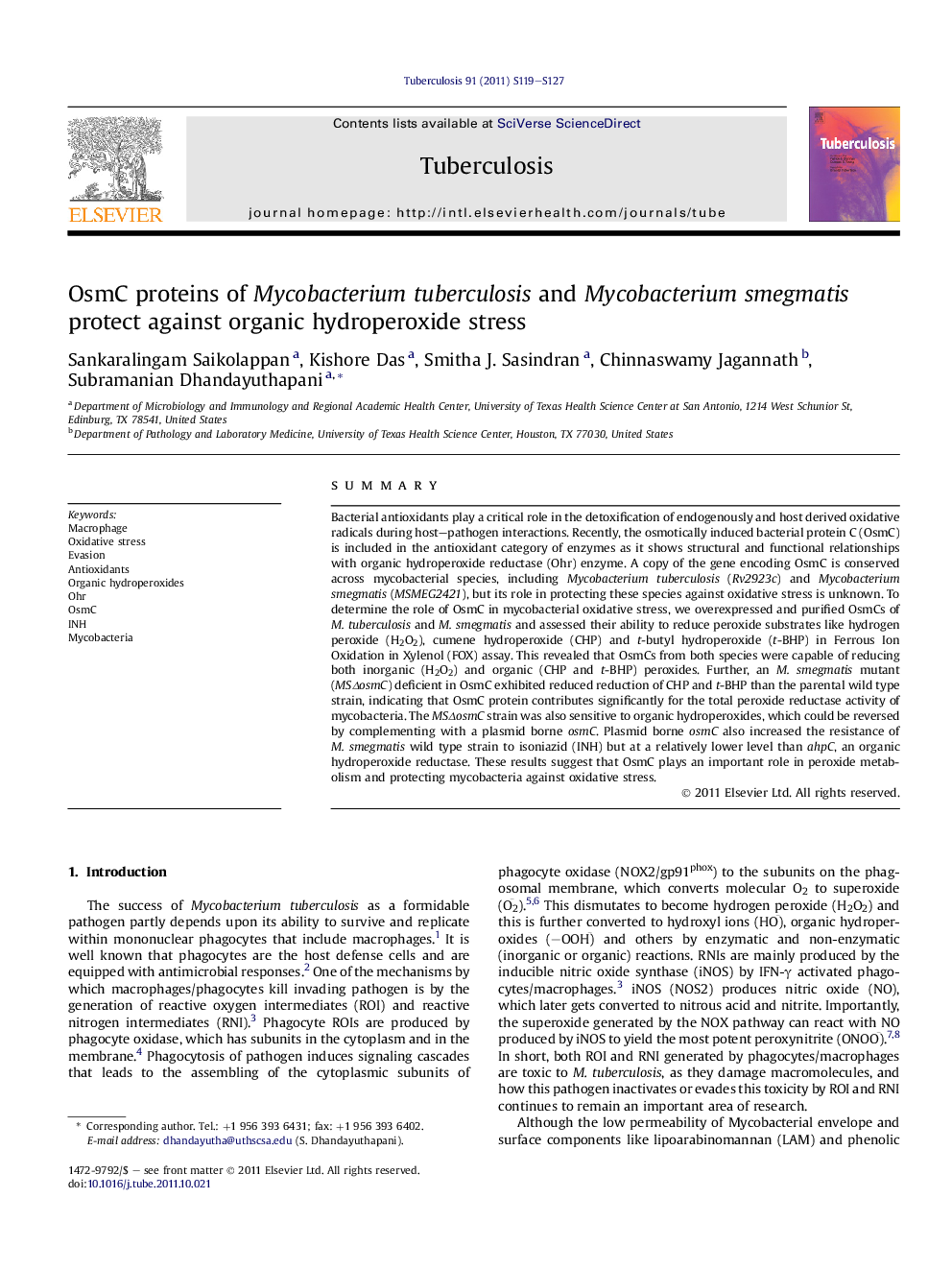| Article ID | Journal | Published Year | Pages | File Type |
|---|---|---|---|---|
| 2401647 | Tuberculosis | 2011 | 9 Pages |
SummaryBacterial antioxidants play a critical role in the detoxification of endogenously and host derived oxidative radicals during host–pathogen interactions. Recently, the osmotically induced bacterial protein C (OsmC) is included in the antioxidant category of enzymes as it shows structural and functional relationships with organic hydroperoxide reductase (Ohr) enzyme. A copy of the gene encoding OsmC is conserved across mycobacterial species, including Mycobacterium tuberculosis (Rv2923c) and Mycobacterium smegmatis (MSMEG2421), but its role in protecting these species against oxidative stress is unknown. To determine the role of OsmC in mycobacterial oxidative stress, we overexpressed and purified OsmCs of M. tuberculosis and M. smegmatis and assessed their ability to reduce peroxide substrates like hydrogen peroxide (H2O2), cumene hydroperoxide (CHP) and t-butyl hydroperoxide (t-BHP) in Ferrous Ion Oxidation in Xylenol (FOX) assay. This revealed that OsmCs from both species were capable of reducing both inorganic (H2O2) and organic (CHP and t-BHP) peroxides. Further, an M. smegmatis mutant (MS∆osmC) deficient in OsmC exhibited reduced reduction of CHP and t-BHP than the parental wild type strain, indicating that OsmC protein contributes significantly for the total peroxide reductase activity of mycobacteria. The MS∆osmC strain was also sensitive to organic hydroperoxides, which could be reversed by complementing with a plasmid borne osmC. Plasmid borne osmC also increased the resistance of M. smegmatis wild type strain to isoniazid (INH) but at a relatively lower level than ahpC, an organic hydroperoxide reductase. These results suggest that OsmC plays an important role in peroxide metabolism and protecting mycobacteria against oxidative stress.
